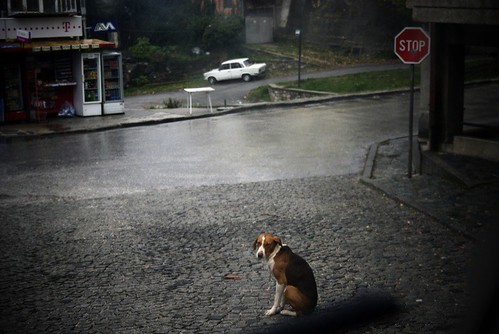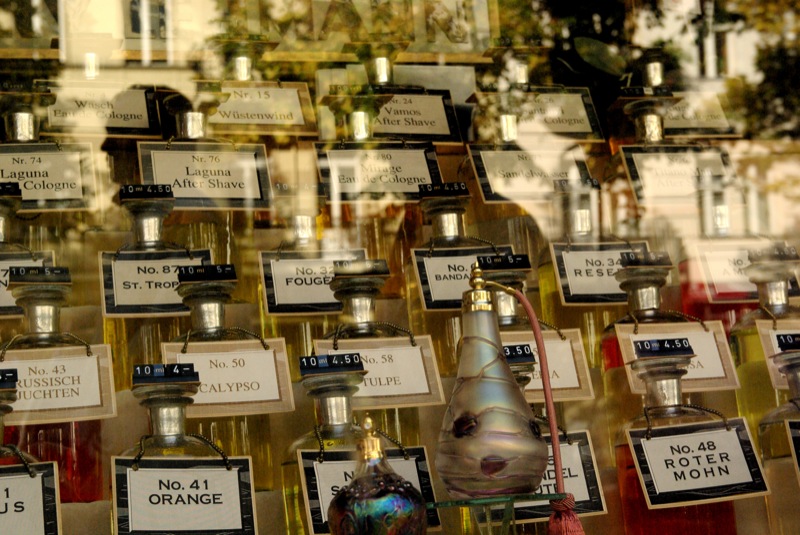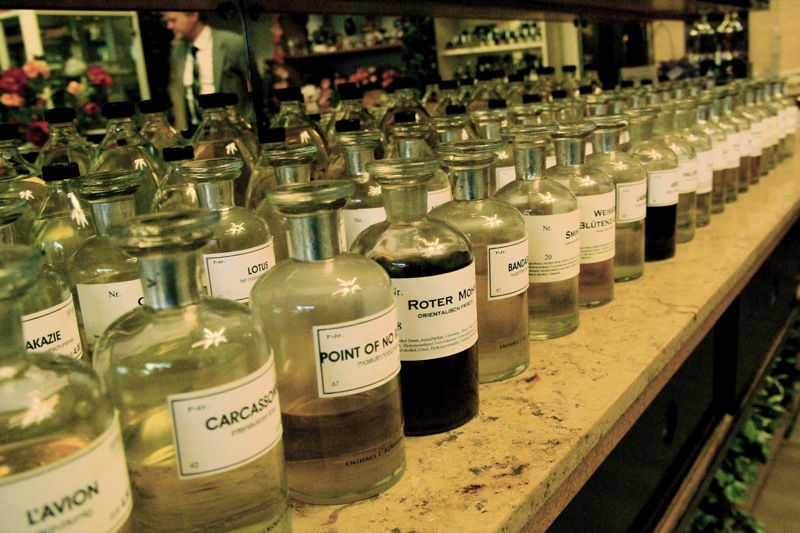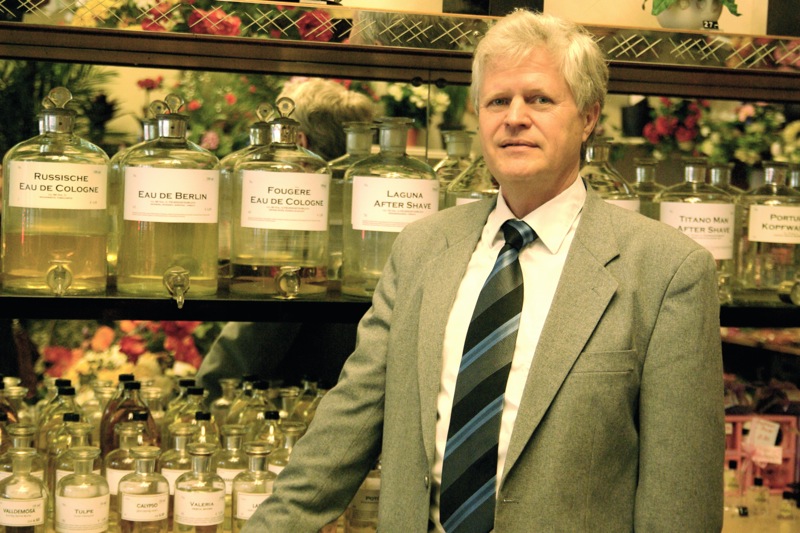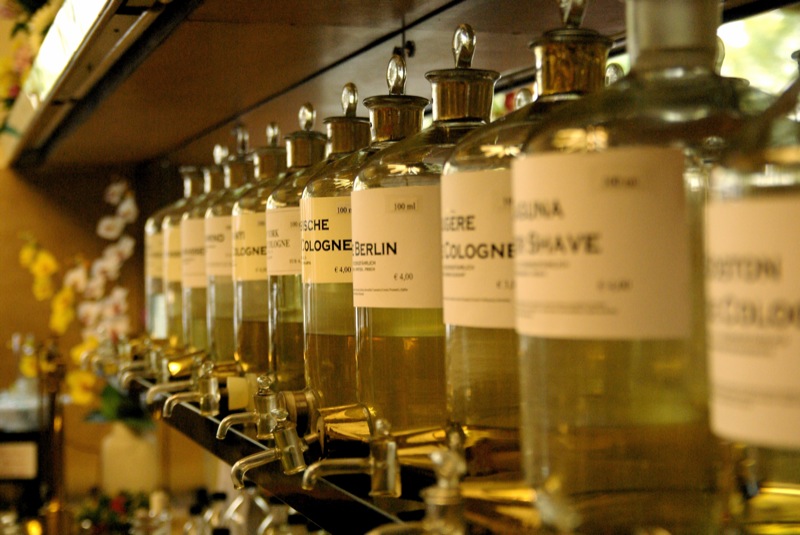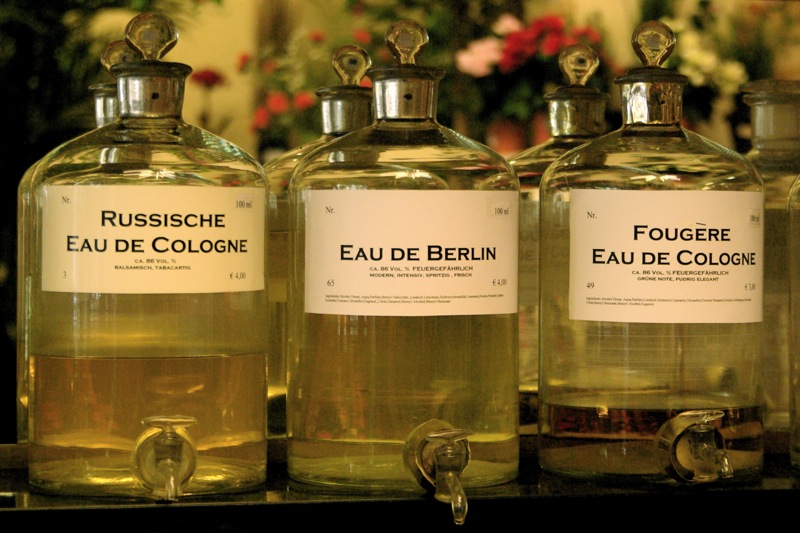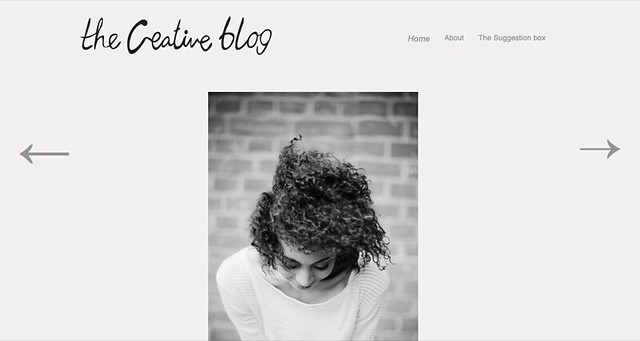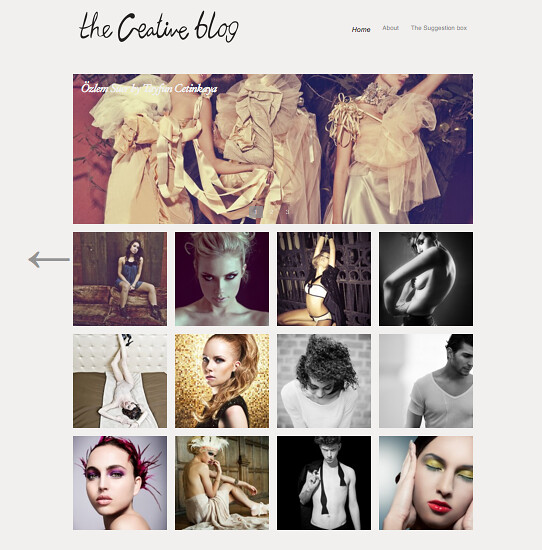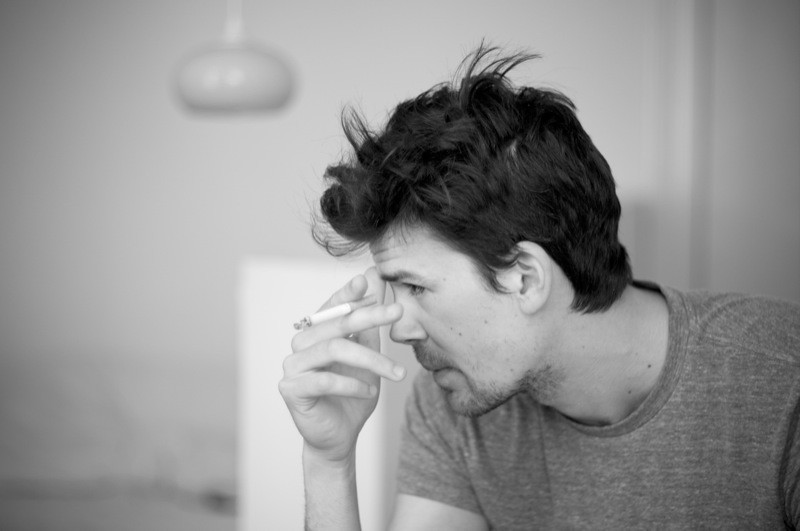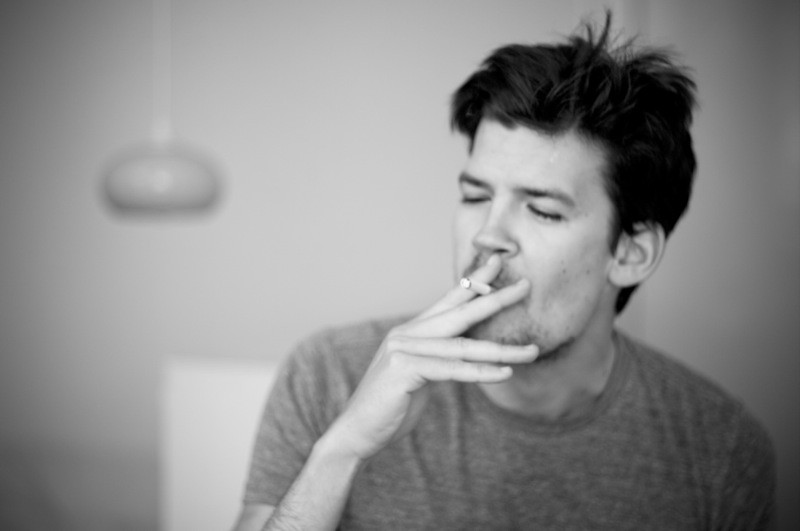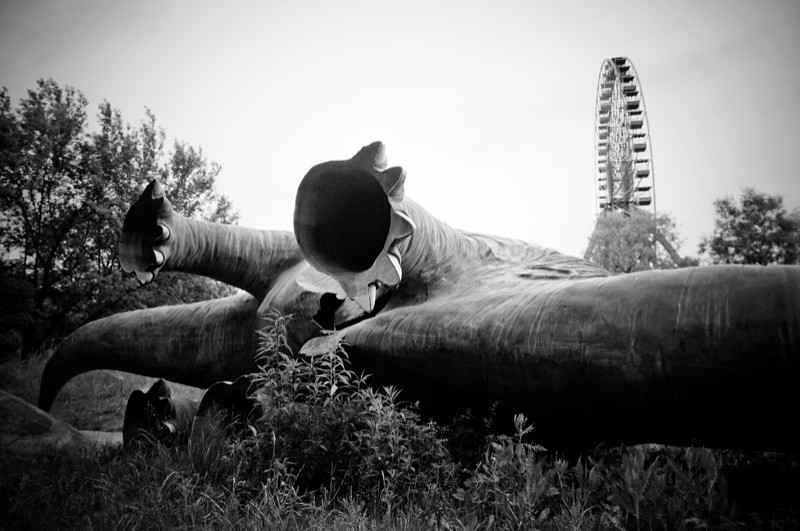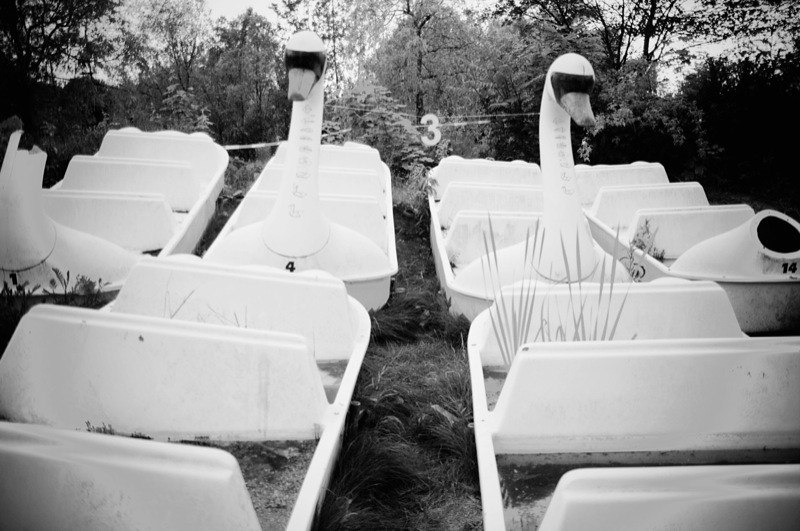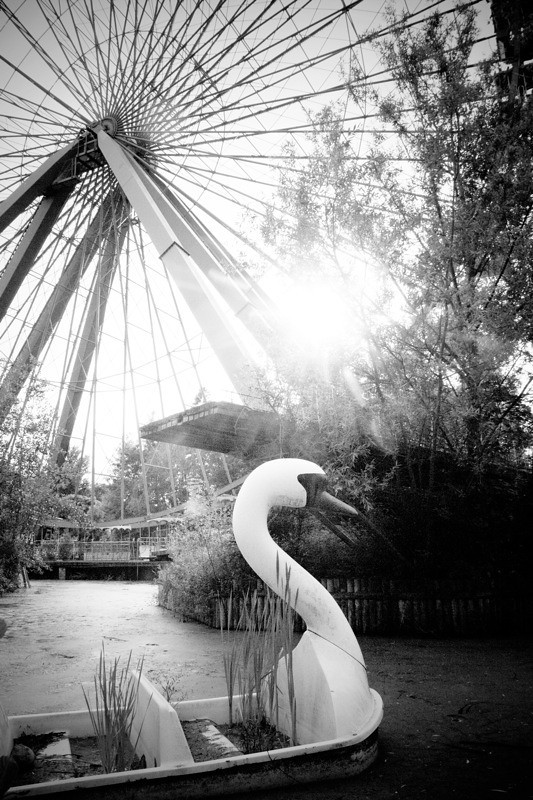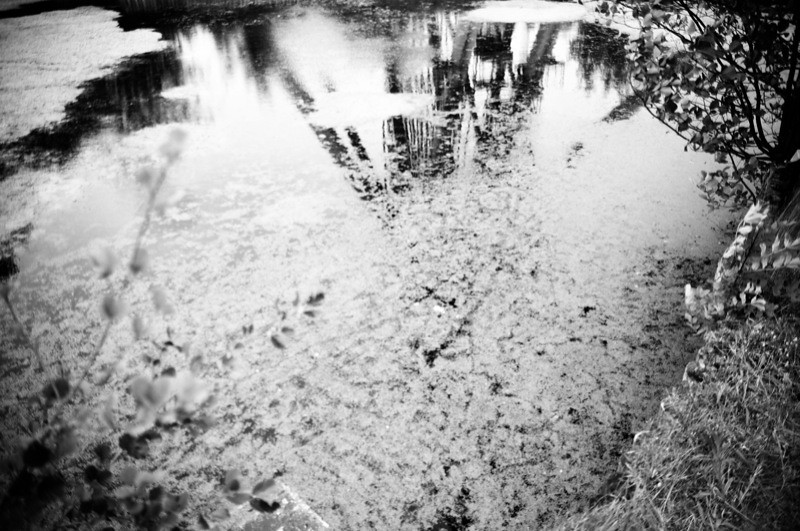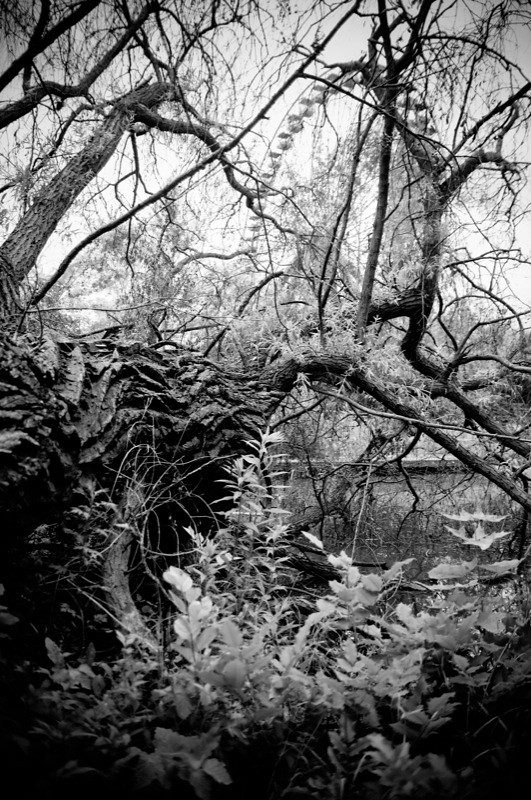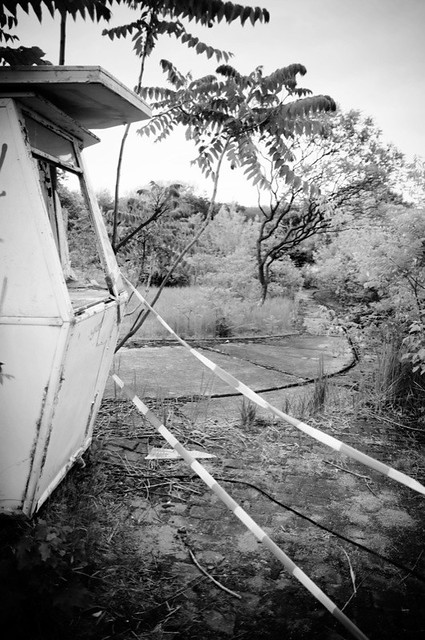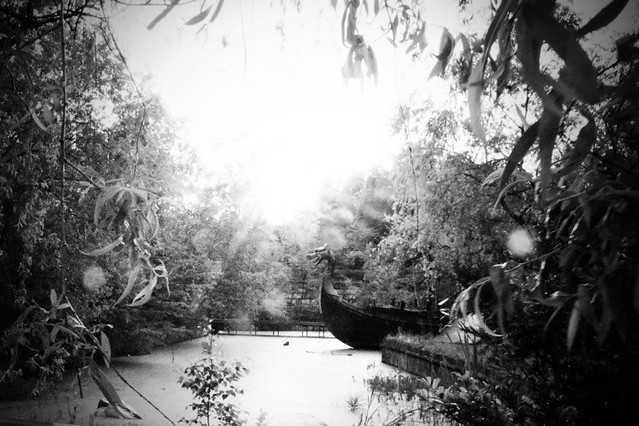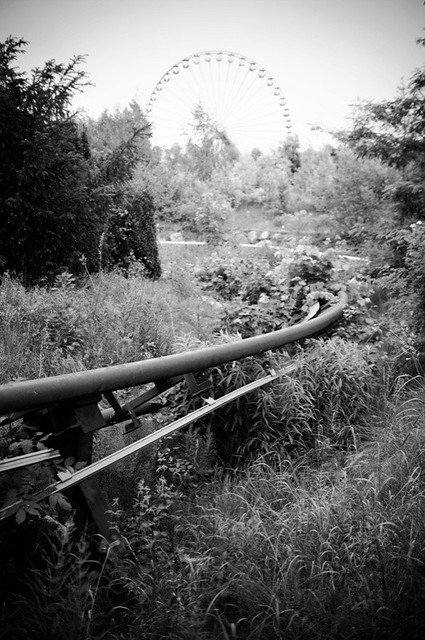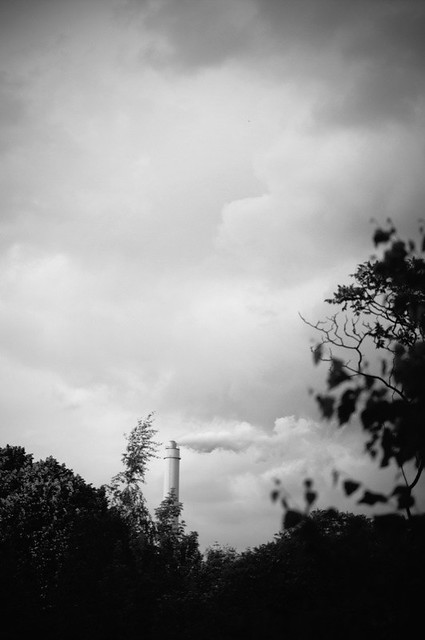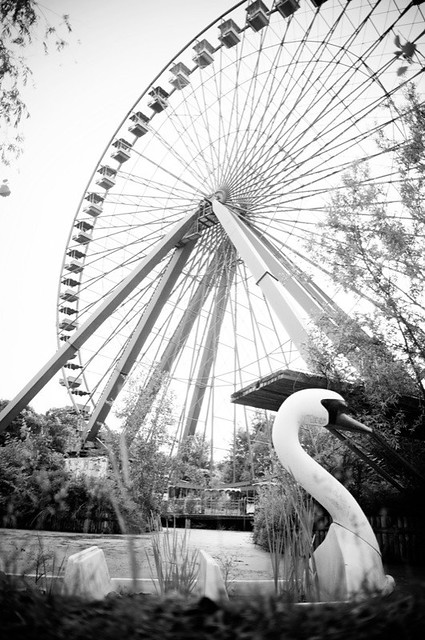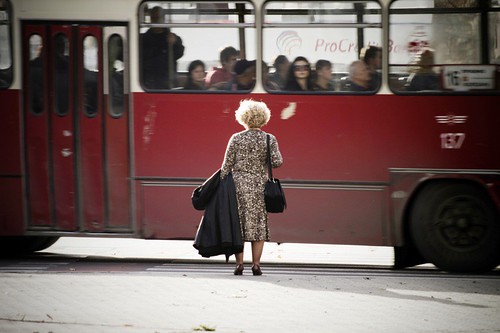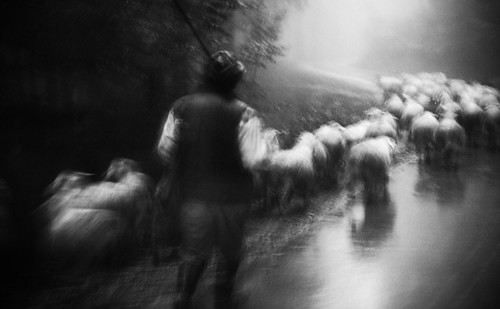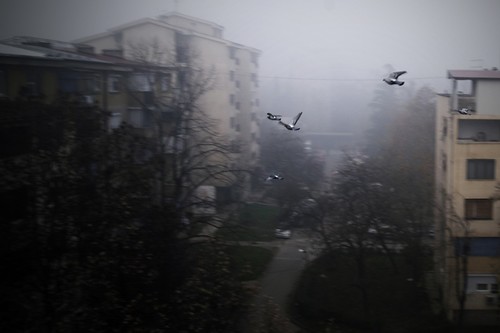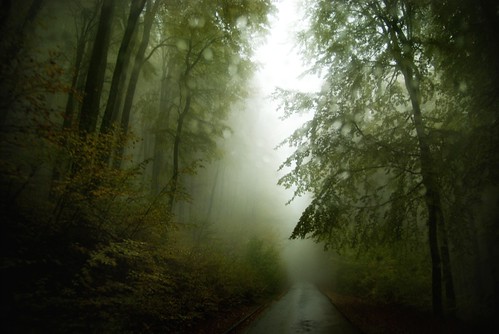Camera Fairytales.
Many times friends and random people have dropped me lines on what camera I use and what camera I would recommend to buy. A lot of times at the point asking me, people were actually willing to spend 1000 Euros or even more for a camera and got really excited because they thought that just holding that super expensive piece in their hand will make them a good photographer right away.
I decided to state my opinion on camera-mania today. Feel wecome to discuss with me!

Does a good camera take good pictures?
Well, I think: It's not true. First of all, it's not the camera taking the picture, it's actually you. Second of all, to make a good photo really good, you need to edit your picture post to taking it. An image file straight from the camera looks like shit (just like a self developped analogue picture if you don't know what you're doing), no matter how you took it. The difference between all those ugly shots and that one really pretty one is a person that, besides knowing how to take a good photo, knows how to develop that good photo so it reflects their style and aesthetics, in digital even more than in analogue.
When I started to get more serious about photography, I spent half of the day, every day in a photo lab developing my analogue black and white shots, thinking about what chemicals to use, how long to use them, what filter to put in the enlarger in order to get the look I wanted, to try out different exposures for the print and most of the time it took me a while in the lab to figure out what combination made my photo looking best.
Editing is more important than the camera!
Today, it's still the same. It's just that I don't spent that time in a darkroom anymore, I spent it in front of my computer. I don't do manipulation to my pictures (like changing a nose), but I spent hours, sometimes days on figuring out what's the right filter, what's the right curve, what's the right exposure for a shot. So before thinking of buying a more expensive camera, I'd definately recommend you to work on your photoshop skills. This doesn't mean you need to be a pro, but you need to know the basics of light and contrast, exposure and color.
In the beginning, edit your picture, save it as a tif or psd afterwards and then let it sit for one or two days, then look at it again. Usually the first editing is "too much", so take away a bit of all effects, then it's usually better than before.
And then, what camera?
If you've figured that out, you can think of the camera. Today, almost every digital camera that's not older than a decade can take decent pictures. The iPhone camera and other cell phone cameras are great (though I'm not a big fan of hipstamatic and similar apps), many compact and bridge cameras do an amazing job. You really only need an SLR camera if you are sure about that you want to go more professional and most importantly, that you have the skills to figure out how to use the features it has compared to your compact camera. Also, it's an advantage that you can change the lenses. But is that really an advantage? If you look on the market, you'll see that there's plenty of compact or bridge cameras, that fullfill a focal length range from i.e. 5mm - 400mm or something similar. That's rats! I only have a range from 18mm to 200mm and I own a whole drawer full of lenses. They cost me a fortune. But they don't give me more than my old bridge camera, that was cheap and and took awesome pictures. I still sell them. That camera had only 5 Megapixels, it cost 333 Euros (and that's six years ago), but it had a range from 10 - 400mm with a fixed maximum aperture of F2.8 throughout the whole range. But let's not get too technical.
Is an expensive camera worth the price?
If you have rich parents that want to pump lots of money up your butt, or you're incredibly rich yourself, don't bother about cheaper opportunities and just go for a high end camera like i.e. the Canon 5D Mark II. But beware that besides a pretty damn expensive body, you'll also need to spend to a lot of money on lenses in addition. Because if you buy that expensive camera, but only get the cheap kit lense with it, your pictures will not get much better, you'll just get giant files stuffing up your hard drive.
If you're on a budget, like most of us, think about the following: Isn't it more usefull to buy a decent but not too expensive camera, if you're more advanced even an SLR, and then invest in lenses?
What makes a camera expensive?
What's most expensive in a newer camera are crazy Megapixels that nobody actually needs. Unless you want to pin up your photos as billboards above sunset boulevard, something like 6 Megapixels, maximum 10, is around about what you need in order to get high quality looking files. Everything more is luxery, that's nice to have but not obligatory. My camera I've been using for the past 12 months has 14 Megapixels and I've never had a problem making large prints of my photos. Some of my photographer friend's cameras have 20+ Megapixels or more. When you compare the quality of an average or even bigger size print, I can not see a difference. But the price difference is enormous. And they are so much heavier, so much bigger, and so much more intimidating to other people (and I love taking pictures without being noticed for my huge, professional looking camera!).
Another price factor are all those special setting opportunities that people like to have but never use. If you actually know how photography works, all you need is a decent white balance, an opportunity for RAW-files, a manual, an aperure priority and a shutter speed priority mode and a sensor that does not have big noise issues (and of course, a good lense).
In the past one or two years many camera producers came up with HD video modes on digital SLR cameras. That's great, if you actually use it. I do. But most people don't. And by now, even most compact cameras, the iPhone and many bridge cameras do HD video. So there's no need to buy that super expensive camera, unless you really want to go pro.
The lense is most important.
Much more important than the number of megapixels, settings and all that are the facts on the lense. Does it have the range of focal length that you need? Is the maximum aperture big enough for you purpose? And this is the only thing you really should spend money on.
What camera for what purpose?
When people ask me what cameras I can recommend I usually ask back what they want it for, what's their ambition and if they actually want to make paper prints (or billboards?!) of their digital files.
In most cases after the answers to these questions, I either recommend a bridge camera with super zoom with a high maximum aperture throughout the whole zoom range (mostly for travelers or wild life photographers, because they need that crazy zoom range, or for people with less ambition), or I recommend a used or not completely "up-to-date" medium priced DSLR. Because it's not about the camera, it's about the lense. You can get a great camera for less than 500 Euros these days, if you go for an older or used model, you can get it even (much much) cheaper. But do invest in lenses. A good lense can cost up to 1000 or even 2000 Euros.
Good lenses are expensive, but here's the trick.
But it doesn't have to. Good lenses have been produced ever since photography was invented. So go for old lenses, and buy them on Ebay, on the fleamarket, or get them from your grandfather, who most likely has some gems in his closet. Most of Pentax's and Nikon's and even Sony's SLRs still use the same bajonette (the part of the camera where you fix the lense to the body) as back in the days. Back then, almost every camera had a very good lense (mostly a 50mm with a maximum aperture of 1.2, 1.4, 1.7 or at least 2) on it. So there's tons of those on the market. And they're really cheap, because most people don't know they can also be used on newer cameras. They take time to get used to, because they demand a bit more skills and mostly manual focus. But they're worth it, because they train the eye and they teach you to actually "see", and for a new lense with the same feautures you'd pay 10 times as much (or much more). Even for all other SLRs and all other brands there's cheap adapters at your local store or on Ebay to make any camera compatible to almost any lense.
This can save you a fortune. Truly.
What I use?
The lense I use most on my camera is an old Pentax K-lense with 50mm focal length, a maximum aperture of 1.4 and manual focus. A friend who didn't use it anymore gave it to me as a gift after I took some photos of him with a similar lense (but a maximum aperture of 1.7) that I got on Ebay for 25 Euros including shipping. My camera is a superb, but medium priced Pentax K7 with 14 Megapixel and the option of HD-video. I always shoot in either manual, aperture priority or shutterspeed priority mode. I've never used any of the "further" settings it has to offer. If I could, I would get rid of them all to make my camera even smaller and light-weight. I've never had a problem enlarging my photos to a certain size even though I don't have 20+ Megapixels. I've been thinking of selling all my other lenses except of a Sigma 18-50mm 1/2.8 zoomlense that's great for travelling and documentary shots that I also use a lot.
I could also use any other camera if I had the opportunity to use my lenses on it. I just happen to like my camera, because I learned photography on the the same brand and got used to the handling. Once you go with a brand, it's hard to go back. I love how things work on it.
The only small deficit of my camera compared to MUCH more expensive ones, is that my sensor is not full format, which causes a 1.5 cropfactor to the actual focal length of my lenses. This means when I use the 50mm lense it's actually 75mm compared to an analogue camera. But that's okay for me, because with my zoomlense I can go to actual 50mm by using a focal length of 33mm . I'd rather spent the money that I save on travelling instead of on a full format sensor camera. I'm just like that.
Now, look at these photos!
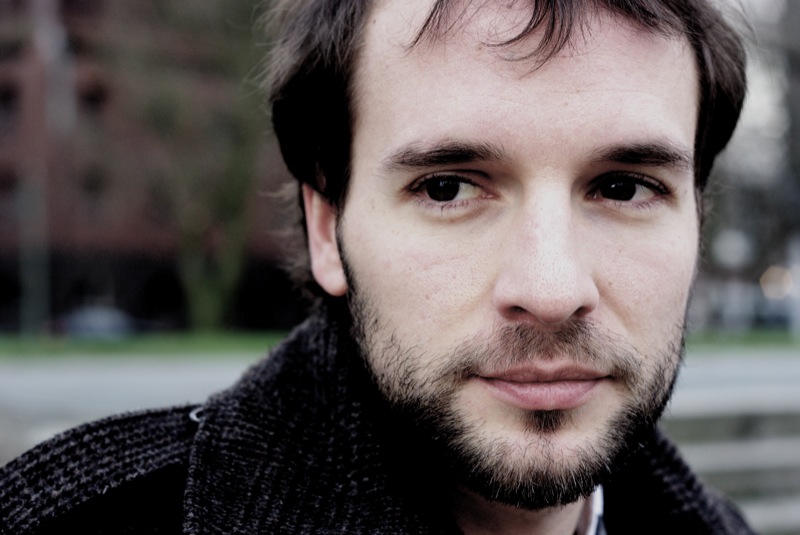
(Taken by me) Pentax K10d (Price today: around 450 Euros) , 10 Megapixel, 50mm, F1.7

(Taken by me) Panasonic Lumix FZ20 (Price today: around 150 Euros, 5 Megapixel, 72mm, F2.8
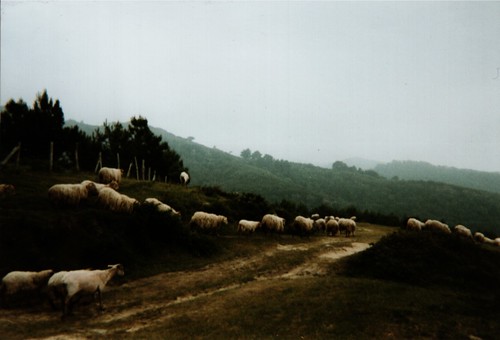
(Taken by me) Disposable Throw-Away Camera (Price today: around 5 Euros), no settings to change

(Taken by me) Pentax K7 (Price today: around 800 Euros), 14 Megapixel, 18mm, F2.8
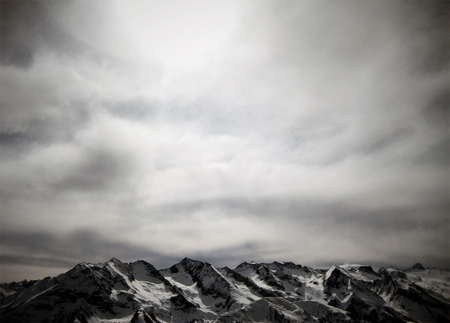
(Taken by Tommy Windecker) Canon Ixus 70 (Price today: around 250 Euros), 7 Megapixel, 6mm, F8
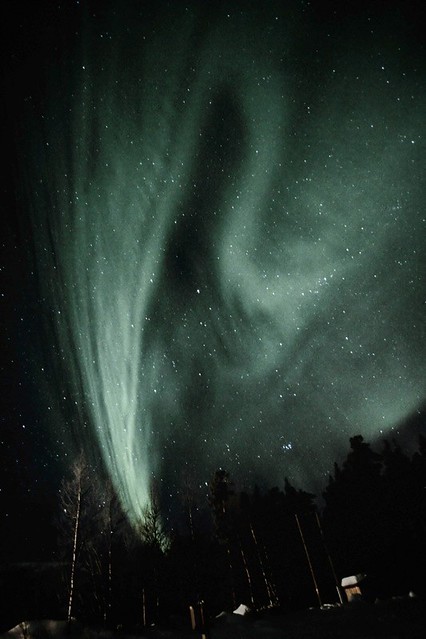
(Taken by me) Canon 7D (Price today: around 1300 Euros), 18 Megapixel, 5mm, F8
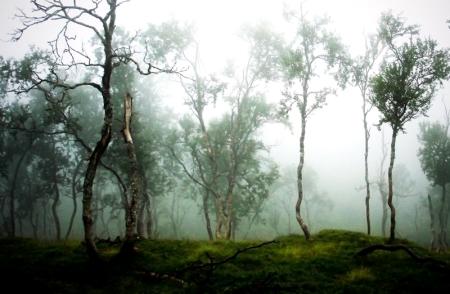
(Taken by utor/Photocase.de) Sony DSC-W100 (Price today: not found, guess: around 200 Euros), 8 Megapixel, 8mm, F2.8

(Taken by a guest writer on Travelettes.net) Casio EX-Z700 (Price today: around 250 Euros) , 7 Megapixel, 18mm, F5

(Taken by Markus Schwarze) Canon 5D Mark II (Price today: around 2000 Euros), 21 Megapixel, 34mm, F1.4
Now, do you really think it's the price of the camera (the cameras used for these photos have a price range between around 5 Euros to around 2000 Euros). Or the Megapixels? Or was it the photographer, in the end, who took a good picture?
Another thing: does your camera have to be brand new? Think about buying a used one and safe a lot of money, expecially on older models with less megapixels.
Please feel welcome to discuss my opinion by commenting on this post. I hope I helped a few people on making decisions how to decide and what camera to buy.
I give advice for free, but this knowledge has grown over 10 years of experience, and nobody paid me for gaining it. If you feel I was helpful and you can spare a small amount, feel free to donate for my advice. I might give more, if this is worth the time it takes. via Paypal.
[Photography] [Advise] [Camera]
I decided to state my opinion on camera-mania today. Feel wecome to discuss with me!

Does a good camera take good pictures?
Well, I think: It's not true. First of all, it's not the camera taking the picture, it's actually you. Second of all, to make a good photo really good, you need to edit your picture post to taking it. An image file straight from the camera looks like shit (just like a self developped analogue picture if you don't know what you're doing), no matter how you took it. The difference between all those ugly shots and that one really pretty one is a person that, besides knowing how to take a good photo, knows how to develop that good photo so it reflects their style and aesthetics, in digital even more than in analogue.
When I started to get more serious about photography, I spent half of the day, every day in a photo lab developing my analogue black and white shots, thinking about what chemicals to use, how long to use them, what filter to put in the enlarger in order to get the look I wanted, to try out different exposures for the print and most of the time it took me a while in the lab to figure out what combination made my photo looking best.
Editing is more important than the camera!
Today, it's still the same. It's just that I don't spent that time in a darkroom anymore, I spent it in front of my computer. I don't do manipulation to my pictures (like changing a nose), but I spent hours, sometimes days on figuring out what's the right filter, what's the right curve, what's the right exposure for a shot. So before thinking of buying a more expensive camera, I'd definately recommend you to work on your photoshop skills. This doesn't mean you need to be a pro, but you need to know the basics of light and contrast, exposure and color.
In the beginning, edit your picture, save it as a tif or psd afterwards and then let it sit for one or two days, then look at it again. Usually the first editing is "too much", so take away a bit of all effects, then it's usually better than before.
And then, what camera?
If you've figured that out, you can think of the camera. Today, almost every digital camera that's not older than a decade can take decent pictures. The iPhone camera and other cell phone cameras are great (though I'm not a big fan of hipstamatic and similar apps), many compact and bridge cameras do an amazing job. You really only need an SLR camera if you are sure about that you want to go more professional and most importantly, that you have the skills to figure out how to use the features it has compared to your compact camera. Also, it's an advantage that you can change the lenses. But is that really an advantage? If you look on the market, you'll see that there's plenty of compact or bridge cameras, that fullfill a focal length range from i.e. 5mm - 400mm or something similar. That's rats! I only have a range from 18mm to 200mm and I own a whole drawer full of lenses. They cost me a fortune. But they don't give me more than my old bridge camera, that was cheap and and took awesome pictures. I still sell them. That camera had only 5 Megapixels, it cost 333 Euros (and that's six years ago), but it had a range from 10 - 400mm with a fixed maximum aperture of F2.8 throughout the whole range. But let's not get too technical.
Is an expensive camera worth the price?
If you have rich parents that want to pump lots of money up your butt, or you're incredibly rich yourself, don't bother about cheaper opportunities and just go for a high end camera like i.e. the Canon 5D Mark II. But beware that besides a pretty damn expensive body, you'll also need to spend to a lot of money on lenses in addition. Because if you buy that expensive camera, but only get the cheap kit lense with it, your pictures will not get much better, you'll just get giant files stuffing up your hard drive.
If you're on a budget, like most of us, think about the following: Isn't it more usefull to buy a decent but not too expensive camera, if you're more advanced even an SLR, and then invest in lenses?
What makes a camera expensive?
What's most expensive in a newer camera are crazy Megapixels that nobody actually needs. Unless you want to pin up your photos as billboards above sunset boulevard, something like 6 Megapixels, maximum 10, is around about what you need in order to get high quality looking files. Everything more is luxery, that's nice to have but not obligatory. My camera I've been using for the past 12 months has 14 Megapixels and I've never had a problem making large prints of my photos. Some of my photographer friend's cameras have 20+ Megapixels or more. When you compare the quality of an average or even bigger size print, I can not see a difference. But the price difference is enormous. And they are so much heavier, so much bigger, and so much more intimidating to other people (and I love taking pictures without being noticed for my huge, professional looking camera!).
Another price factor are all those special setting opportunities that people like to have but never use. If you actually know how photography works, all you need is a decent white balance, an opportunity for RAW-files, a manual, an aperure priority and a shutter speed priority mode and a sensor that does not have big noise issues (and of course, a good lense).
In the past one or two years many camera producers came up with HD video modes on digital SLR cameras. That's great, if you actually use it. I do. But most people don't. And by now, even most compact cameras, the iPhone and many bridge cameras do HD video. So there's no need to buy that super expensive camera, unless you really want to go pro.
The lense is most important.
Much more important than the number of megapixels, settings and all that are the facts on the lense. Does it have the range of focal length that you need? Is the maximum aperture big enough for you purpose? And this is the only thing you really should spend money on.
What camera for what purpose?
When people ask me what cameras I can recommend I usually ask back what they want it for, what's their ambition and if they actually want to make paper prints (or billboards?!) of their digital files.
In most cases after the answers to these questions, I either recommend a bridge camera with super zoom with a high maximum aperture throughout the whole zoom range (mostly for travelers or wild life photographers, because they need that crazy zoom range, or for people with less ambition), or I recommend a used or not completely "up-to-date" medium priced DSLR. Because it's not about the camera, it's about the lense. You can get a great camera for less than 500 Euros these days, if you go for an older or used model, you can get it even (much much) cheaper. But do invest in lenses. A good lense can cost up to 1000 or even 2000 Euros.
Good lenses are expensive, but here's the trick.
But it doesn't have to. Good lenses have been produced ever since photography was invented. So go for old lenses, and buy them on Ebay, on the fleamarket, or get them from your grandfather, who most likely has some gems in his closet. Most of Pentax's and Nikon's and even Sony's SLRs still use the same bajonette (the part of the camera where you fix the lense to the body) as back in the days. Back then, almost every camera had a very good lense (mostly a 50mm with a maximum aperture of 1.2, 1.4, 1.7 or at least 2) on it. So there's tons of those on the market. And they're really cheap, because most people don't know they can also be used on newer cameras. They take time to get used to, because they demand a bit more skills and mostly manual focus. But they're worth it, because they train the eye and they teach you to actually "see", and for a new lense with the same feautures you'd pay 10 times as much (or much more). Even for all other SLRs and all other brands there's cheap adapters at your local store or on Ebay to make any camera compatible to almost any lense.
This can save you a fortune. Truly.
What I use?
The lense I use most on my camera is an old Pentax K-lense with 50mm focal length, a maximum aperture of 1.4 and manual focus. A friend who didn't use it anymore gave it to me as a gift after I took some photos of him with a similar lense (but a maximum aperture of 1.7) that I got on Ebay for 25 Euros including shipping. My camera is a superb, but medium priced Pentax K7 with 14 Megapixel and the option of HD-video. I always shoot in either manual, aperture priority or shutterspeed priority mode. I've never used any of the "further" settings it has to offer. If I could, I would get rid of them all to make my camera even smaller and light-weight. I've never had a problem enlarging my photos to a certain size even though I don't have 20+ Megapixels. I've been thinking of selling all my other lenses except of a Sigma 18-50mm 1/2.8 zoomlense that's great for travelling and documentary shots that I also use a lot.
I could also use any other camera if I had the opportunity to use my lenses on it. I just happen to like my camera, because I learned photography on the the same brand and got used to the handling. Once you go with a brand, it's hard to go back. I love how things work on it.
The only small deficit of my camera compared to MUCH more expensive ones, is that my sensor is not full format, which causes a 1.5 cropfactor to the actual focal length of my lenses. This means when I use the 50mm lense it's actually 75mm compared to an analogue camera. But that's okay for me, because with my zoomlense I can go to actual 50mm by using a focal length of 33mm . I'd rather spent the money that I save on travelling instead of on a full format sensor camera. I'm just like that.
Now, look at these photos!

(Taken by me) Pentax K10d (Price today: around 450 Euros) , 10 Megapixel, 50mm, F1.7

(Taken by me) Panasonic Lumix FZ20 (Price today: around 150 Euros, 5 Megapixel, 72mm, F2.8

(Taken by me) Disposable Throw-Away Camera (Price today: around 5 Euros), no settings to change

(Taken by me) Pentax K7 (Price today: around 800 Euros), 14 Megapixel, 18mm, F2.8

(Taken by Tommy Windecker) Canon Ixus 70 (Price today: around 250 Euros), 7 Megapixel, 6mm, F8

(Taken by me) Canon 7D (Price today: around 1300 Euros), 18 Megapixel, 5mm, F8

(Taken by utor/Photocase.de) Sony DSC-W100 (Price today: not found, guess: around 200 Euros), 8 Megapixel, 8mm, F2.8

(Taken by a guest writer on Travelettes.net) Casio EX-Z700 (Price today: around 250 Euros) , 7 Megapixel, 18mm, F5

(Taken by Markus Schwarze) Canon 5D Mark II (Price today: around 2000 Euros), 21 Megapixel, 34mm, F1.4
Now, do you really think it's the price of the camera (the cameras used for these photos have a price range between around 5 Euros to around 2000 Euros). Or the Megapixels? Or was it the photographer, in the end, who took a good picture?
Another thing: does your camera have to be brand new? Think about buying a used one and safe a lot of money, expecially on older models with less megapixels.
Please feel welcome to discuss my opinion by commenting on this post. I hope I helped a few people on making decisions how to decide and what camera to buy.
I give advice for free, but this knowledge has grown over 10 years of experience, and nobody paid me for gaining it. If you feel I was helpful and you can spare a small amount, feel free to donate for my advice. I might give more, if this is worth the time it takes. via Paypal.
[Photography] [Advise] [Camera]
careaux - Tue Jun 7, 11:49
